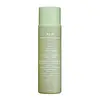What's inside
What's inside
 Key Ingredients
Key Ingredients

 Benefits
Benefits

 Ingredients Side-by-side
Ingredients Side-by-side

Water
Skin ConditioningHouttuynia Cordata Extract
Skin ConditioningGlycerin
HumectantButylene Glycol
HumectantPentylene Glycol
Skin ConditioningXylitol
HumectantBifida Ferment Lysate
Skin ConditioningSodium Hyaluronate
HumectantGlycine Soja Seed Extract
Skin ConditioningCentella Asiatica Extract
CleansingHydrolyzed Hyaluronic Acid
HumectantScutellaria Baicalensis Root Extract
AstringentGaultheria Procumbens Leaf Extract
PerfumingLonicera Japonica Flower Extract
Skin ConditioningBetaine
Humectant1,2-Hexanediol
Skin ConditioningPanthenol
Skin ConditioningEthylhexylglycerin
Skin ConditioningOctanediol
Tocopherol
AntioxidantBiosaccharide Gum-4
Skin ConditioningDisodium EDTA
Xanthan Gum
EmulsifyingWater, Houttuynia Cordata Extract, Glycerin, Butylene Glycol, Pentylene Glycol, Xylitol, Bifida Ferment Lysate, Sodium Hyaluronate, Glycine Soja Seed Extract, Centella Asiatica Extract, Hydrolyzed Hyaluronic Acid, Scutellaria Baicalensis Root Extract, Gaultheria Procumbens Leaf Extract, Lonicera Japonica Flower Extract, Betaine, 1,2-Hexanediol, Panthenol, Ethylhexylglycerin, Octanediol, Tocopherol, Biosaccharide Gum-4, Disodium EDTA, Xanthan Gum
Water
Skin ConditioningGlycerin
Humectant1,2-Hexanediol
Skin ConditioningNelumbo Nucifera Flower Extract
Skin ConditioningMadecassoside
AntioxidantPanthenol
Skin ConditioningSchisandra Sphenanthera Fruit Extract
AntioxidantBeta-Glucan
Skin ConditioningXylitol
HumectantCyanocobalamin
Skin ConditioningDipotassium Glycyrrhizate
HumectantAllantoin
Skin ConditioningXylitylglucoside
HumectantAnhydroxylitol
HumectantRosa Damascena Flower Water
MaskingPolyacrylate Crosspolymer-11
Emulsion StabilisingHydroxyacetophenone
AntioxidantSodium Metabisulfite
AntioxidantTrisodium Ethylenediamine Disuccinate
Sodium Benzoate
MaskingPotassium Sorbate
PreservativeCitric Acid
BufferingTromethamine
BufferingWater, Glycerin, 1,2-Hexanediol, Nelumbo Nucifera Flower Extract, Madecassoside, Panthenol, Schisandra Sphenanthera Fruit Extract, Beta-Glucan, Xylitol, Cyanocobalamin, Dipotassium Glycyrrhizate, Allantoin, Xylitylglucoside, Anhydroxylitol, Rosa Damascena Flower Water, Polyacrylate Crosspolymer-11, Hydroxyacetophenone, Sodium Metabisulfite, Trisodium Ethylenediamine Disuccinate, Sodium Benzoate, Potassium Sorbate, Citric Acid, Tromethamine
 Reviews
Reviews

Ingredients Explained
These ingredients are found in both products.
Ingredients higher up in an ingredient list are typically present in a larger amount.
1,2-Hexanediol is a synthetic liquid and another multi-functional powerhouse.
It is a:
- Humectant, drawing moisture into the skin
- Emollient, helping to soften skin
- Solvent, dispersing and stabilizing formulas
- Preservative booster, enhancing the antimicrobial activity of other preservatives
Glycerin is already naturally found in your skin. It helps moisturize and protect your skin.
A study from 2016 found glycerin to be more effective as a humectant than AHAs and hyaluronic acid.
As a humectant, it helps the skin stay hydrated by pulling moisture to your skin. The low molecular weight of glycerin allows it to pull moisture into the deeper layers of your skin.
Hydrated skin improves your skin barrier; Your skin barrier helps protect against irritants and bacteria.
Glycerin has also been found to have antimicrobial and antiviral properties. Due to these properties, glycerin is often used in wound and burn treatments.
In cosmetics, glycerin is usually derived from plants such as soybean or palm. However, it can also be sourced from animals, such as tallow or animal fat.
This ingredient is organic, colorless, odorless, and non-toxic.
Glycerin is the name for this ingredient in American English. British English uses Glycerol/Glycerine.
Learn more about GlycerinPanthenol is a common ingredient that helps hydrate and soothe the skin. It is found naturally in our skin and hair.
There are two forms of panthenol: D and L.
D-panthenol is also known as dexpanthenol. Most cosmetics use dexpanthenol or a mixture of D and L-panthenol.
Panthenol is famous due to its ability to go deeper into the skin's layers. Using this ingredient has numerous pros (and no cons):
Like hyaluronic acid, panthenol is a humectant. Humectants are able to bind and hold large amounts of water to keep skin hydrated.
This ingredient works well for wound healing. It works by increasing tissue in the wound and helps close open wounds.
Once oxidized, panthenol converts to pantothenic acid. Panthothenic acid is found in all living cells.
This ingredient is also referred to as pro-vitamin B5.
Learn more about PanthenolWater. It's the most common cosmetic ingredient of all. You'll usually see it at the top of ingredient lists, meaning that it makes up the largest part of the product.
So why is it so popular? Water most often acts as a solvent - this means that it helps dissolve other ingredients into the formulation.
You'll also recognize water as that liquid we all need to stay alive. If you see this, drink a glass of water. Stay hydrated!
Learn more about WaterXylitol is a humectant and prebiotic. It can help with dry skin.
In studies, xylitol has been shown to improve dry skin. It decreased transepidermal water loss, or when water passes through the skin and evaporates. Xylitol also showed to help improve the biomechanical properties of the skin barrier.
The prebiotic property of xylitol may also help reinforce our skin's natural microbiome. Having a healthy microbiome prevents infection by bad bacteria and helps with hydration.
As a humectant, Xylitol helps draw moisture from both the air and from deeper skin layers. This helps keep skin hydrated.
Xylitol is a sugar alcohol and commonly used as a sugar substitute. It is naturally occurring in plants such as strawberries and pumpkin.
Learn more about Xylitol